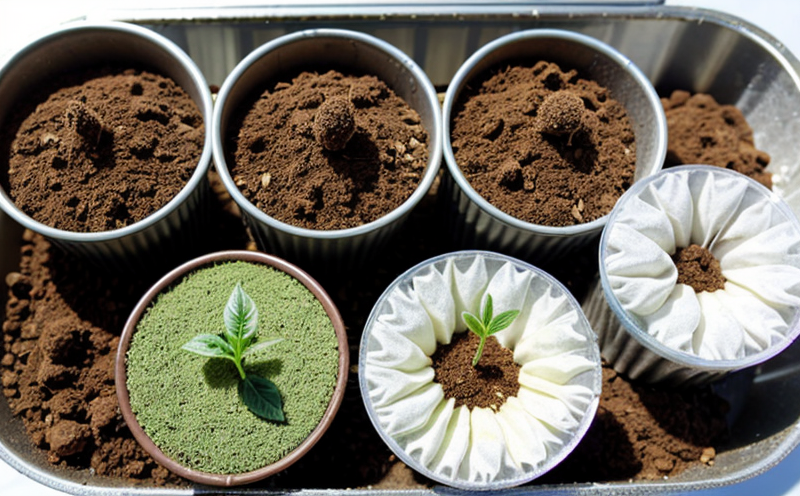Seed Dormancy Testing
The process of seed dormancy testing is crucial in agriculture and forestry as it ensures that seeds are viable and can germinate under appropriate conditions. Dormancy refers to the state where a seed does not germinate even though it has all the necessary physiological requirements for growth, such as water, oxygen, and temperature. Dormant seeds often require specific treatments or environmental cues to break dormancy before they will germinate.
Understanding seed dormancy is essential for optimizing crop yields and ensuring successful planting practices. Dormancy can be caused by physical barriers within the seed coat, after-ripening requirements, or genetic factors. This test helps farmers, researchers, and industry professionals to identify and manage dormant seeds, thereby improving germination rates and overall plant health.
For instance, in crops like wheat, barley, and rice, dormancy can significantly impact the success of planting seasons. Dormant seeds may not germinate during the intended sowing period due to unfavorable environmental conditions or inherent seed characteristics. This is where our laboratory plays a pivotal role in providing accurate and reliable testing services.
Our lab uses advanced techniques such as cold stratification, scarification, and chemical treatments to break dormancy and assess the effectiveness of these methods. These tests are conducted under controlled environmental conditions that mimic natural scenarios, ensuring accuracy and consistency. We also employ high-precision instruments like germination testers, which provide quantitative data on seed viability.
Dormancy testing is not only important for agricultural crops but also for forestry applications where tree seeds need to be stored over extended periods before planting. Dormant seeds can remain viable for several years if properly managed, making dormancy testing a critical aspect of forest management and reforestation efforts.
The results from our tests help stakeholders make informed decisions about seed treatment, storage conditions, and planting schedules. By identifying dormant seeds early in the process, we enable clients to take proactive measures that enhance germination rates and reduce waste due to non-germinating seeds.
Moreover, this testing contributes significantly to sustainable agricultural practices by minimizing resource wastage and ensuring efficient use of land, water, and other inputs. In essence, seed dormancy testing is a vital tool in the quest for food security and environmental sustainability.
Why It Matters
Dormancy testing plays a crucial role in ensuring agricultural success by addressing key challenges faced by farmers and researchers. Dormant seeds can pose significant risks if not properly managed, leading to wasted resources and reduced crop yields.
- Improves Germination Rates: By identifying and treating dormant seeds before planting, we enhance the likelihood of successful germination, which is critical for achieving optimal plant growth.
- Reduces Waste: Dormancy testing helps in minimizing the number of non-germinating seeds, thus reducing unnecessary waste and improving overall efficiency.
- Sustains Resources: Proper management of dormant seeds through testing ensures that resources like land, water, and labor are used optimally, contributing to sustainable agricultural practices.
In the context of forestry, dormancy testing is equally important. Dormant tree seeds need specific conditions to break their dormancy before they can successfully establish in the field. This testing ensures that reforestation projects proceed smoothly and effectively, leading to healthy forests and biodiversity.
For quality managers and compliance officers, accurate seed dormancy testing provides essential data for meeting regulatory requirements and ensuring product quality standards are met. Dormancy tests also support research and development efforts by providing insights into seed biology and behavior under different environmental conditions.
Scope and Methodology
The scope of our seed dormancy testing service encompasses a comprehensive approach to evaluating the dormancy status of seeds. We employ a variety of methods tailored to specific crop types, ensuring that each test is conducted under conditions most conducive to revealing true dormancy.
- Seed Stratification: Seeds are stratified in moistened substrates at controlled temperatures and humidity levels to simulate natural environmental cues. This process helps break physical or physiological dormancy by exposing seeds to favorable germination conditions.
- Cold Stratification: For seeds that require cold exposure, this method involves placing them in a refrigerator for an extended period. Cold stratification is particularly effective for breaking seed dormancy caused by after-ripening requirements.
- Scarification and Chemical Treatments: Physical scarification or chemical treatments are used to breach physical barriers within the seed coat, allowing water and oxygen to penetrate more easily.
After undergoing these treatments, seeds are subjected to germination testing under controlled conditions. Our lab uses state-of-the-art equipment such as germination testers that provide precise measurements of germination rates over time.
The methodology we follow is aligned with international standards like ISO 3632 and ASTM D5081, ensuring consistency and reliability in our results. By adhering to these standards, we can offer accurate and standardized data for clients from around the world.
International Acceptance and Recognition
- ISO Compliance: Our seed dormancy testing meets the requirements of ISO standards, ensuring compatibility with international quality assurance systems.
- Agricultural Standards: We are accredited to ASTM D5081 and EN 14327, aligning our services with recognized agricultural protocols.
Our laboratory is a trusted partner for industries that demand stringent quality assurance in their supply chains. By adhering to these standards, we ensure that the results of our tests are universally accepted and respected.





